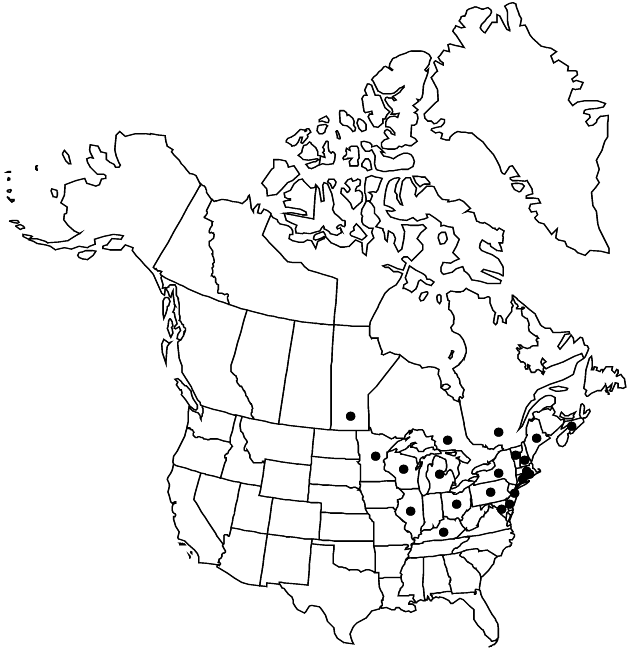Artemisia pontica
Sp. Pl. 2: 847. 1753.
Perennials, 40–100 cm, somewhat aromatic; rhizomes creeping, woody. Stems relatively numerous, erect, brown, mostly simple (brittle, bases woody) canescent or glabrate. Leaves cauline, grayish green; sessile (proximalmost short-petiolate); blades triangular to ovate, 1–5 × 1–3 cm, 2–3-pinnatifid (lobes 0.5–1 mm wide, acute), faces pubescent (abaxial) or hairy to glabrate (adaxial). Heads (nodding) in paniculiform arrays 10–22 × 2–4 cm. Involucres spheric, 1.5–2(–3) mm. Phyllaries (subequal) linear, hairy. Florets: pistillate 10–12; bisexual 40–45; corollas pale yellow, 0.2–0.3 mm, sometimes gland-dotted (stigma lobes relatively short, not emerging from tubes, short-ciliate). Cypselae ellipsoid (angled), 0.1–0.2 mm, glabrous. 2n = 18.
Phenology: Flowering late summer–fall.
Habitat: Disturbed areas, valleys, shaded thickets
Elevation: 100–500 m
Distribution

Introduced; Man., N.S., Ont., Que., Conn., Del., Ill., Ky., Maine, Md., Mass., Mich., Minn., N.H., N.J., N.Y., Ohio, Pa., R.I., Vt., Wis., Eurasia.
Discussion
Artemisia pontica has finely dissected gray foliage and is widely planted as an ornamental. It escapes locally; it has not been reported as problematic. The only species with which it has been confused in North America is A. abrotanum, which has dark green (not gray) foliage.
Selected References
None.